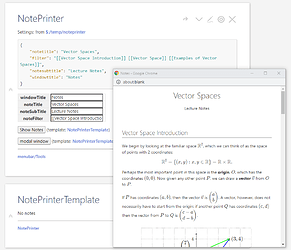I do this ALL the time, though I call them author-elements and I don’t use the technique at the chapter level. In my world, a chapter is a grouping of tiddlers.
A chapter-section (chapsec) is a tiddler. Chapsecs belonging to the same chapter have the same number/name in their chapter field.
A chapsec might contain zero or more author-elements:
<about-fission>
Stuff about nuclear fission
</about-fission>
<about-bilbo-baggins>
Stuff about Bilbo Baggins
</about-bilbo-baggins>
Another tiddler might be used to pull together (transclude) all the about-bilbo-baggins blocks to present them as one tiddler. Same with about-fission.
To answer @Mohammad’s question:
I favor both patterns and techniques.
Some chapter section tiddlers are small, 100 words or even less. Some contain thousands of words. Basically, however many words (and images) it contains, a chapsec covers a topic, beginning to end.
If a given block of text is likely to be reused in another context, it becomes either:
- its own tiddler which I can transclude in its entirety
- an
<author-element> which I can transclude using a regex macro that splits on the author-element
For #2, I try to conjure text that is self supporting, aiding its use in different contexts. Without doing that, you can end up with “patchwork text” that doesn’t read so well.



